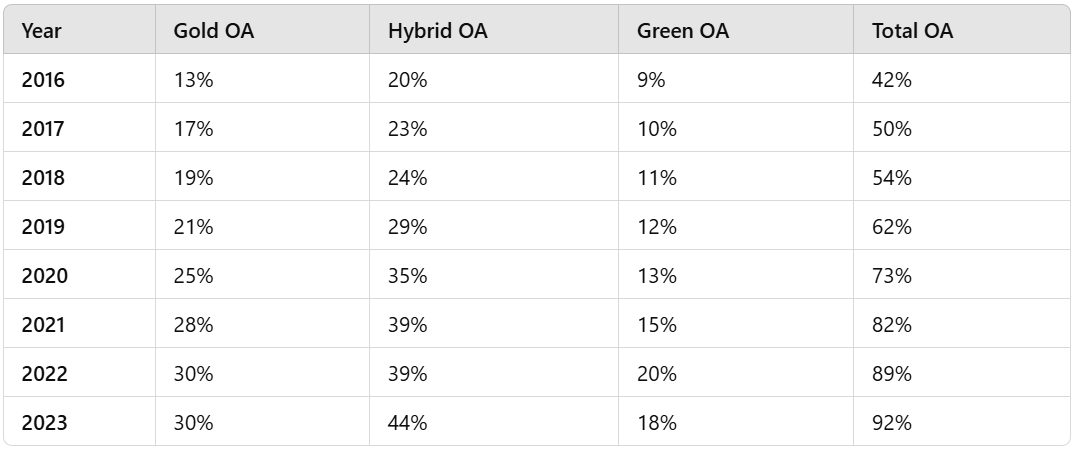Percentage of Open Access articles in the Netherlands continues to grow
The share of articles by Dutch researchers published as Open Access continues to rise. In 2023, 92% of peer-reviewed articles by researchers affiliated with Dutch universities were made available as Open Access.
UNL Monitor
Since 2016, Universities of the Netherlands (UNL), has been monitoring the open access publishing rate of peer-reviewed articles in the Netherlands, as per agreement with the Ministry of Education, Culture and Science. This monitoring has always been done by splitting the open access output into "gold", "hybrid" and "green". Alongside experts from the universities, UNL has developed a definition framework (see download at the bottom of the page) to monitor open access peer-reviewed articles which is used by every university. The table below shows the percentages per category:

Next steps
The universities of the Netherlands are sticking to their 100% Open Access ambitions. In the coming years, this goal will expand from peer-reviewed articles only to all scientific output. Moreover, there will be an increasing focus on making all publications compliant with funder requirements (such as the ones of cOAlitionS), and on investing in the further professionalization of our publisher deals and in the expansion of sustainable alternatives in the publishing ladscape (such as Diamond Open Access).
Open Access Taxonomy
To be open access, an article must be freely and permanently accessible to everyone. This can be done by publishing the article in an Open Access journal: “gold”. A second option is to publish an open article in a paid subscription journal: “hybrid”. And the “green” route is to make the article available via a so-called 'trusted repository' (a digital archive of, for example, a university). To determine which journals are available Open Access, we based ourselves on the DOAJ, an online register of Open Access, peer-reviewed journals.
Check the UNL definition framework here.
You are here
Dutch National website providing information for academics about the advantages of open access to publicly financed research








